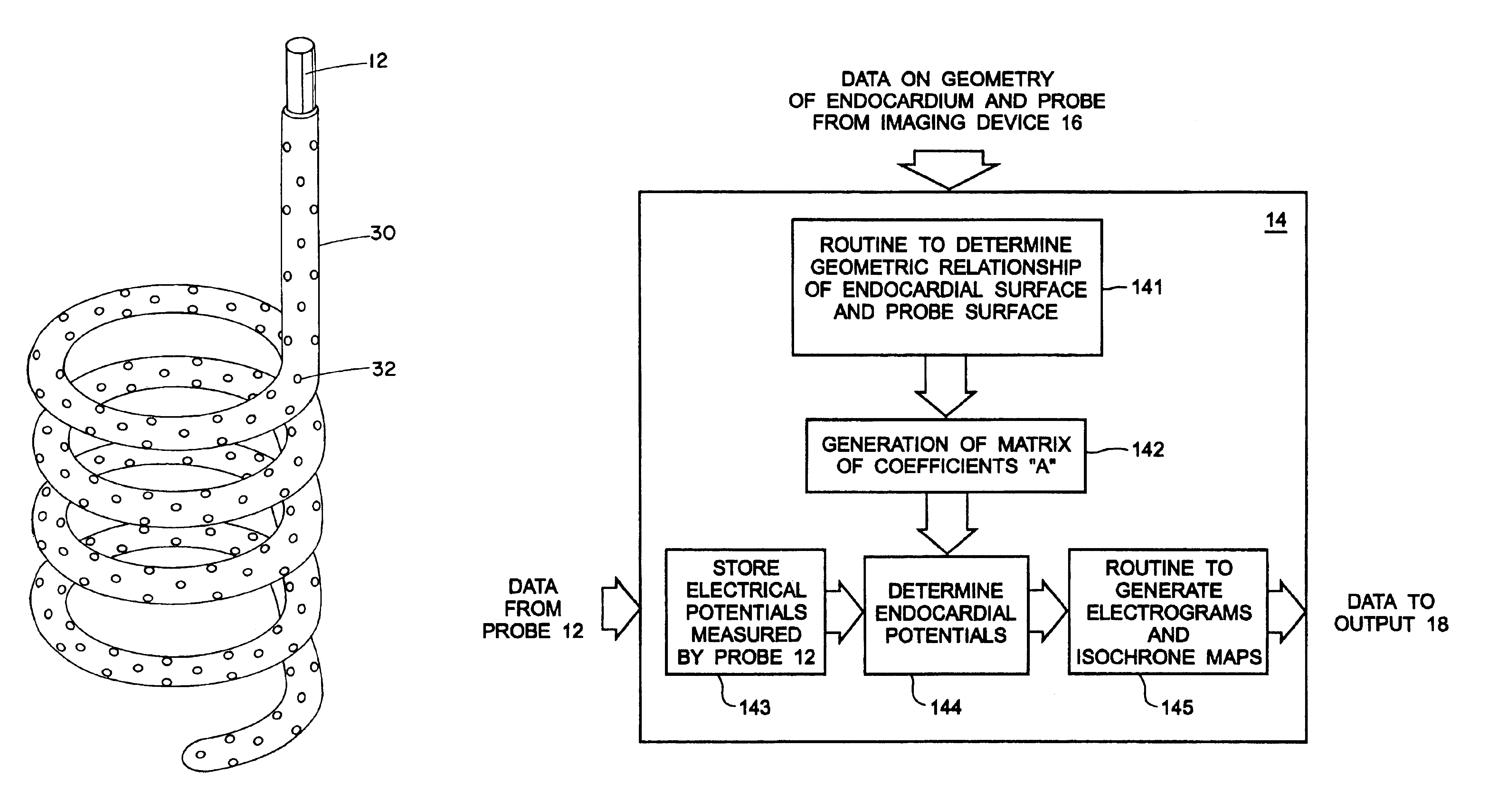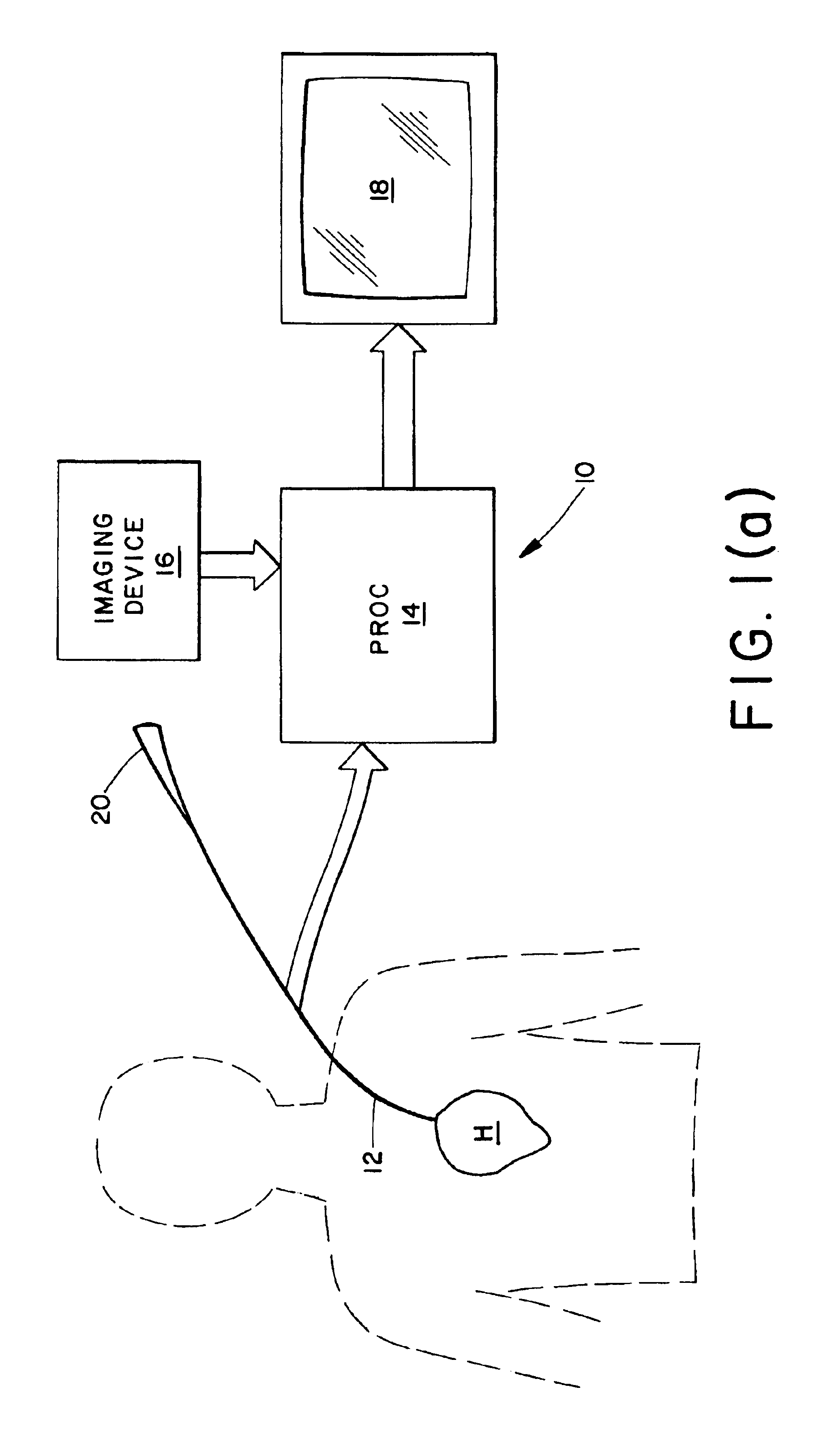Electrophysiological cardiac mapping system based on a non-contact non-expandable miniature multi-electrode catheter and method therefor
a multi-electrode, non-contact technology, applied in catheters, instruments, therapies, etc., can solve the problems of limited recording sites, time-consuming, and difficulty in current techniques for mapping potentials directly from the endocardium
- Summary
- Abstract
- Description
- Claims
- Application Information
AI Technical Summary
Benefits of technology
Problems solved by technology
Method used
Image
Examples
Embodiment Construction
A mathematical inverse methodology for reconstruction of endocardial potentials, electrograms and isochrones from non-contact, intracavitary probe measurements has been developed and validated. A study in an isolated canine left ventricle (LV) demonstrated that the inversely computed endocardial potential maps reconstruct with good accuracy and resolve the major features of the measured endocardial potential maps, including maxima, minima and regions of negative and positive potentials. A more recent systematic evaluation demonstrated that computed temporal electrograms and isochrones also closely approximate their directly measured counterparts. The isochronal maps correctly captured the regions of early and late activation for a single pacing site and for two simultaneous pacing sites separated by 17 mm. Moreover, the entire activation sequence was closely approximated, including regions of nonuniform conduction (e.g. isochrone crowding indicating slow conduction). The size of the...
PUM
 Login to View More
Login to View More Abstract
Description
Claims
Application Information
 Login to View More
Login to View More - R&D
- Intellectual Property
- Life Sciences
- Materials
- Tech Scout
- Unparalleled Data Quality
- Higher Quality Content
- 60% Fewer Hallucinations
Browse by: Latest US Patents, China's latest patents, Technical Efficacy Thesaurus, Application Domain, Technology Topic, Popular Technical Reports.
© 2025 PatSnap. All rights reserved.Legal|Privacy policy|Modern Slavery Act Transparency Statement|Sitemap|About US| Contact US: help@patsnap.com



